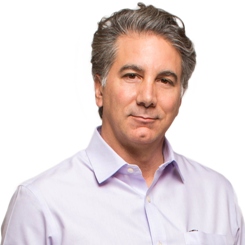The following is a guest blog post by Tom Giannulli, MS, MD and CMO at Kareo.

A recent piece by Anne Zieger on EMR & EHR opened up the discussion regarding whether or not direct primary care (DPC) physicians can or should ditch their electronic health record (EHR). And, this isn’t the first time the topic has surfaced. Other blogs have suggested that since EHRs are really just a means to gather documentation for insurance claims, DPC doctors don’t need them. Further, they offer other arguments against EHRs—like poor workflow and patient experience—however, the focus was really around insurance.
Yet, this is not a reason in and of itself for why DPC physicians should give up their EHRs. One role of an EHR is to improve documentation and coding to ensure physicians get paid. This is a good thing for DPC physicians, as well as traditional practices. The majority of DPC physicians use more than one payment model within their practice, meaning many also bill insurance for at least some patients.
A study conducted in 2015 showed that only 28% of physicians who used a DPC, concierge or other membership model in their practice had their entire patient panel on that model. The rest used it for some, but not all, patients. In fact, the largest group—37%—had 25% or less of their patients on a membership payment model. That said, insurance billing continues to be a challenge that those practices must navigate. An EHR can help them get paid correctly. It can also help them report for quality initiatives, like Meaningful Use and PQRS, prepare for the newly proposed MACRA ruling, and allow them to bill for chronic care management (CCM) services, while also improving patient experience and outcomes.
Independent practices understand that as we move forward in healthcare, a single payment model won’t do the trick. They need to be nimble and open to many options from fee-for-service to DPC to Virtual ACOs and other value-based reimbursement programs. The agile medical practices will be the ones that thrive in the long term. They are looking both at reimbursement models and industry changes, as well as increasing patient demands, such as increased connectivity, price transparency and improved patient access.
Using the EHR, Regardless of Practice Model
This is why even for those DPC practices that do go all in and don’t bill insurance, an EHR is essential. Many DPC practices offer largely primary care services with a focus on prevention and wellness. The right EHR can enable not only visit documentation but preventive care alerts and quick access to patient education. With a truly mobile EHR, physicians can engage patients face-to-face and share information in real time.
With the addition of integrated patient engagement features, such as telemedicine, self-care instructions and videos, tracking of wearable devices, and secure messaging through a portal, patients and their caregivers can stay in sync with their providers. This is an added level of convenience that DPC practices should support. Moreover, patient engagement components can be a critical part of managing wellness when studies show that most patients forget what their physician said after they leave the office. Keeping patients well means keeping the lines of communication open and a portal can play an important role.
Not only have patients expressed that they are more loyal to a physician who offers a portal (for the reasons stated above), but they have also said they like features like electronic prescribing. In fact, over 75% of patients have said they prefer an EHR to paper charts. Beyond the desire of patients, many states are beginning to mandate not just standard ePrescribing but also electronic prescribing for controlled substances. DPC physicians will not be exempt from rules like these.
There’s no other option but the EHR
It’s true that you can piece together just the technology features you want for your practice by combining several systems. However, the blog post referenced above seemed to suggest you could use an alternate system to an EHR. If you pick and choose features here and there, wouldn’t that mean more work entering data into a bunch of disparate systems? Or, logging into several different platforms translating to added time and less secure environments. One for ePrescribing, one for scheduling and reminders, one for the patient portal and maybe another one for patient collections?
There are cloud-based EHRs today that can offer most, if not all, of this in a single platform. One platform means one patient database, one login, and one easy-to-access system for all employees. And for DPC practices with small staff, no duplicate data entry or tedious jumping from system to system. In addition, a single end-to-end system that can support all the needs of a practice also means the practice can be positioned for flexibility. For example, if a DPC practice decides to accept insurance again or try another payment model, you’ll have the solutions you need without making significant changes to your workflow.
EHRs may not be perfect, but they are improving in their ability to meet increasing consumer demands and changing government regulation. Moving forward, more progressive EHR platforms will continue to offer add-on partners or native capabilities to solve consumer-centric needs. As the types of practice models change and evolve, the need for a core EHR should remain a constant, while additional features will vary. Thus, the flexibility and configurability of the EHR platform is critical to enabling long term success.
Full Disclosure: Kareo is an advertiser on this site.













